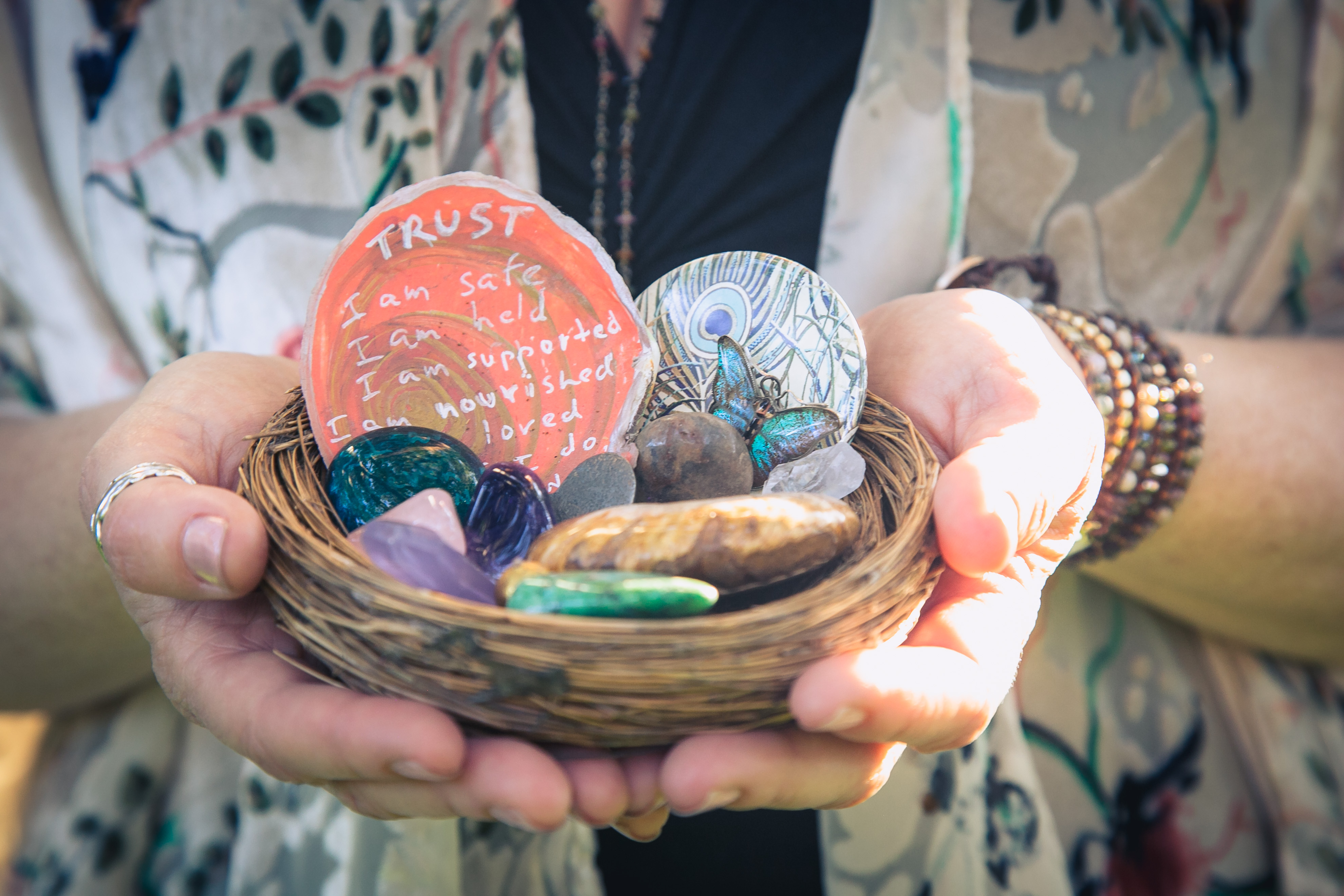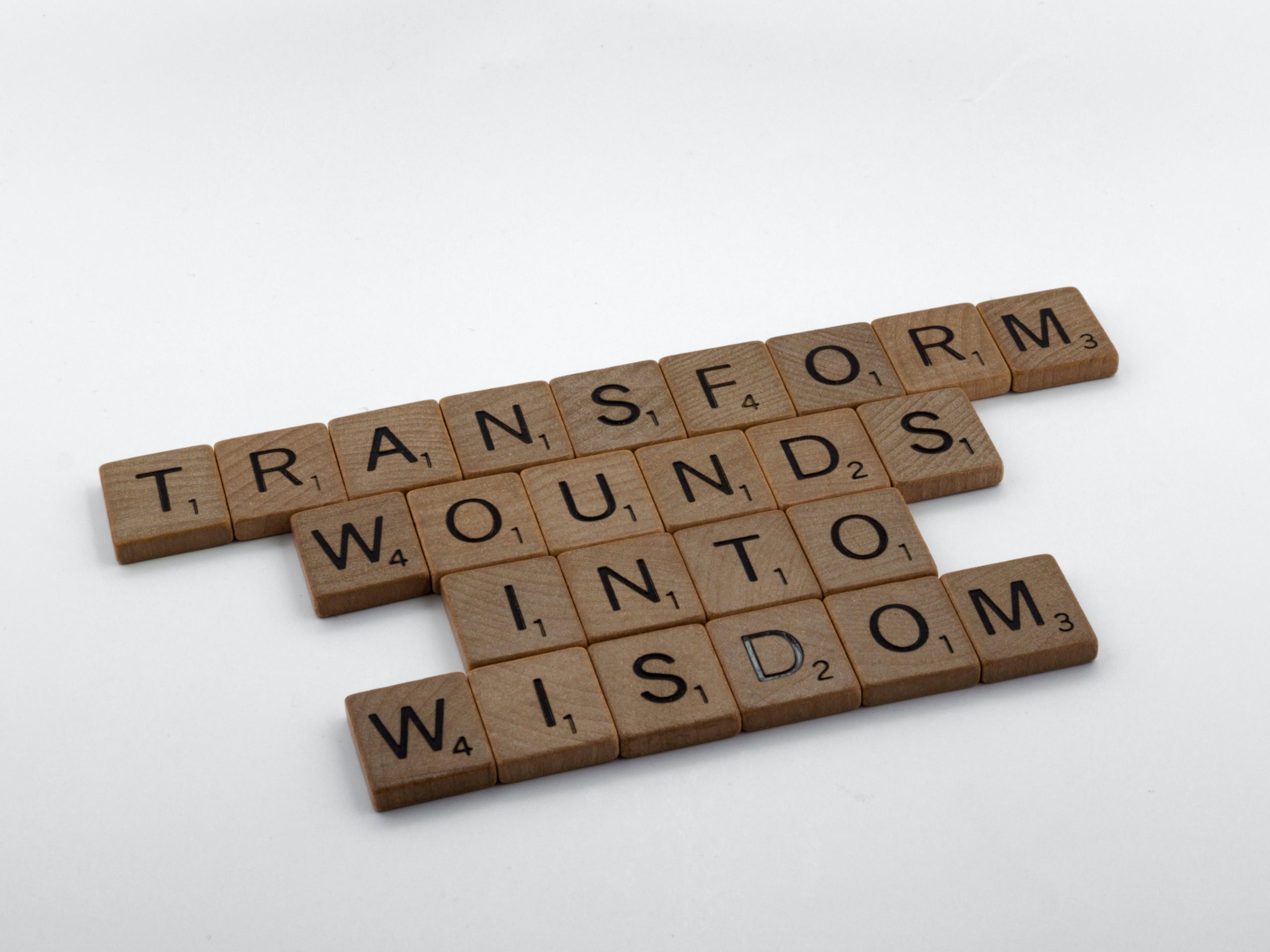In this four-part blog series, I outline some foundational principles of fortification for the body, mind, relationships and spirit. In Part 1, I discussed the important ways to support our metabolic and immune health. Some of those same principles apply to mental health.
Many cognitive and behavior change models in the mental-health field focus largely on the process from thought to response. That’s what I think leads to a chain of mental and emotional processes ending in an action — that behaviors stem first from our thoughts. They, in turn, are triggered from what we sense in our environment. This feeling then creates a belief or story about the situation, rather an interpretation, which may or may not be factual. This belief, or story, then informs our response to the situation. This happens usually in a split second, and varies from person to person. The question, though: is there something else affecting this process? Something that creates that variation between one person to the next in the same situation. And how do we define a healthy vs. an impaired response?
What kinds of mental and emotional responses are we talking about here? ,
* Depressive and anxiety symptoms (persistent sadness, excessive worry, lethargy, changes in appetite, anger and irritability, restlessness, muscle tension and chronic pain, reckless behavior, poor concentration, suicidal ideation)
* Attentional challenges
* Mood swings
* Brain Fog
* Insomnia or excessive sleep
* Aggression or rage
* Tics, Phobias or Obsessions
* PTSD
* Addiction
To understand this process of thought to action, we must know how the nervous system works. Understanding the nervous system, along with stress and trauma, has grown exponentially in recent years with pioneers like Dr. Stephen Porges, Dr. Peter Levine, Dr. Bessel Van Der Kolk, Dr. Gabor Maté and now Kimberly Ann Johnson. It’s vital to realize that the nervous system and trauma are inextricably linked, as both require an understanding of our sense of safety and connection with others, which impacts the functioning of every other aspect of our physiology, mental well-being and relationship development.
Dr. Stephen Porges expanded our understanding of the nervous system with the Polyvagal Theory that connects our evolution as mammals and our nervous system as linked to social interactions, which impacts both our physiological and emotional states.
In short, we are social beings, wired for connection to others.

We once understood that there were two levels of our nervous system, the sympathetic (active, responsive, fight, flight) and the parasympathetic (rest, digest, freeze). There is a third Porges identifies as the Social Nervous System, which defines how safe we feel and how we connect with others. Polyvagal theory recognizes that the vagus nerve, the 10th cranial nerve that “wanders’’ from the brain stem down through various organs in the body, ending in the colon. It impacts our mood, immune response, digestion, heart functioning and blood pressure. Most importantly, this communication between body and brain affects our sense of safety and connection.
In relation to our mental and emotional resilience, what’s important to note is the response to our environment and other people is completely adaptive. We have learned it from both innate, ancestral and experiential knowing. We are imprinted with knowledge, both from the experiences growing up, as well as those passed down in our DNA from our ancestors. Our bodies hold the memories of how to respond to threats, whether it was our own or from our parents or grandparents, especially if it was never resolved. Kimberly Ann Johnson, author of “The Call of the Wild,” explains these adaptations as not logical or rational, but instinctive. We must understand our own nervous system, which is uniquely designed and “primed’’ based on our own predispositions and experiences.
Not every stressful event causes us to be traumatized. For instance, there were many individuals who lived through 9/11 in New York City at the Twin Towers. While some developed PTSD, many did not. The primary difference we learned is those who escaped the long-term adverse effects of trauma were able to “discharge’’ the stress from their body, often by actively getting themselves or another out of danger. Interestingly, there were many not in the city who still experience the aftereffects of the stress from that day because they felt helpless to do anything. You might say, that is ridiculous … but it is not. Many times, for a traumatized person, the experience of, and response to, a threat can be disproportionate to the reality of the situation. . One might call it overreacting but again, our nervous system does not respond rationally to the “perceived’’ threat.
You may say, “Well, I was never in a war or sexually abused or lived through a major natural disaster. Why, do I always feel on edge, hyper-vigilant, have difficulty focusing, feel full of rage or completely frozen in my life?’’
It’s not just major traumatic events that create PTSD-like symptoms since ongoing stressors can also have the same impact. Those situations could be a verbally abusive or unavailable parent, partner or boss, living through a divorce or major transition, chronic illness, unsafe neighborhoods, racialized or gender-based trauma and harassment. .
Awareness

The first step in the healing process is to identify your own nervous-system tendencies. In the face of a perceived threat, what responses do you react to?*:
- Fight: irritation, frustration, anger, rage, annihilation (sympathetic)
- Flight: worry, anxiety, fear, terror, panic (sympathetic)
- Freeze: confusion, disorientation, numbness, apathy, helplessness resignation, collapse ( parasympathetic)
- Fit In: loneliness, isolation, imposter syndrome (parasympathetic-social)
- Fawn: niceness, appease, acquiesce (parasympathetic-social)
(*list adapted from Kimberly Ann Johnson: Call of the Wild)
We all have what I call “deep grooves,’’ like a record that has been played so often, the needle gets stuck in the groove. It’s the responses we lean into most often because it’s worked in the past. Our nervous system was designed to be flexible, to move frequently between active and recovery states, but we get stuck when trauma gets lodged in our cells and our response begins to skip like a record, coming back to heightened experiences and responding from that state. We may get stuck in the on position (sympathetic) or the off position (parasympathetic)
Our second step takes us to our body’s metabolic and immune functioning where 80-90 percent of both our brain neurotransmitters and immune system are formed in the gut. Remember that vagus nerve that runs from the brain to the gut? This is part of the communication pathway that informs our brain and body how to respond to what information we are “digesting’’ on multiple levels. As a mental-health practitioner I understand now how handicapped I was 20 years ago in supporting young families in their quest to quell their children’s anxiety, depression and behavior. I didn’t understand how much their diet and nutrient intake can affect mood and behavior. Inflammatory foods like gluten, dairy, refined sugars and grains along with processed seed oils and trans-fats can have a significant impact. . Exploring your family’s nutrient intake is a major step in understanding if this is a possible link in your mental and emotional resilience.
Fortification-Detoxification
Remember that two sides of fortification are detoxification and nourishment. First we must release what does not serve, then we fill ourselves up with all that heals to truly create resilience.
After we understand our nervous system tendencies, it’s important to focus our attention on clearing out the old patterns, pathways, cycles and stories. One thing to note: emotional responses to situations are not always the same. In his book “My Grandmother’s Hands” Resmaa Menakem discusses the difference between
“clean pain’’ and “dirty pain.’’
Clean pain is what we experience in life’s ups and downs. It can look like:
- Grief and loss of a loved one, or from a past unresolved experience
- Sadness and concern for someone you care about
- The pain after a major incident like an accident, natural disaster or terror event
- Disappointment or hurt from someone else’s actions
- Regret if you made a choice that hurt another person
Dirty pain, on the other hand, is what comes from the most wounded parts of ourselves. This kind of pain looks like:
- Blame, shame or revenge
- Avoidance of responsibility or lack of acknowledgement of pain or wrong doing.
- Denial
- Self-hate or internalized oppression
- Distrust
- Bias
Detoxification is really shifting our mindset and response from dirty pain to clean pain. This may mean shifting what we are digesting (physically, mentally and emotionally), flexing and stretching into new new patterns that allow us to move between various sympathetic to parasympathetic states more fluidly and with the ability to take responsibility for what is ours. Our responses and patterns were developed as adaptations to our experiences and environments as a form of protection for body, mind and spirit, Effective behavior change is not about eradication, it’s about adding adaptive responses that become more rewarding, like adding new tools, not necessarily eliminating the old ones.
Fortification-Nourishment

Once we have created more space, it’s time to fill it with the habits and nourishment that our bodies and souls crave. Here are a few tools for the toolbox:
The first tool is really just becoming present to what is. I find Resmaa Menakem’s Five Anchor’s** to be a simple but profound process to becoming present and moving through clean pain:
1. Soothe yourself to quiet your mind, calm your heart and settle your body.
2. Simply notice the sensations, vibrations, and emotions in your body instead of reacting to them.
3. Accept the discomfort — and notice when it changes — instead of trying to flee from it.
4. Stay present and in your body as you move through the unfolding experience, with all its ambiguity and uncertainty, and respond from your best parts of yourself.
5. Safely discharge any energy that remains.
**Direct From “My Grandmother’s Hands” by Resmaa Menakem
Presence (and discharging energy) includes using all of your senses:
- Breathwork … there are many, many different kinds. Our Breath Collective is a great resource
- Vocalizing (humming, chanting, singing, laughing, screaming)
- Movement (bouncing, walking, dancing, running)
- Connection with consent (hugging, massaging, holding hands)
- Visualization or finding beauty (watch the sunrise or sunset, looking at flowers)
- Essential Oils and other scents that either activate or calm as needed
- Getting out in nature and in the sunshine
Self-care is imperative when supporting mental and emotional well-being.
Some foundational ways to care for oneself include:
· Having a healthy sleep routine. This may include turning off electronics at least one hour before bed and keeping them out of the bedroom, maintaining a dark room and a consistent bedtime. For most people going to bed between 10-11 pm and waking between 6-7 maintains a healthy circadian rhythm. Consider replacing your phone and television with activities that shift you toward a parasympathetic state like journaling, handwork, cuddling or yoga nidra.
· Creating healthy rhythms with the seasons, the moon cycles and the day. My favorite resource for this is Kate Northrup’s book and journal “Do Less.” Women, in particular, are cyclical beings and scheduling your day, week, month and year on lunar cycles actually can allow greater flow and productivity.
· Resting and playing is an essential part of healing and finding joy in this life. If you have trouble throttling into downtime, I encourage you to schedule time for relaxation. In a very sympathetic dominant culture, it is important to create the balance with parasympathetic activities like coloring, meditation, knitting, crocheting, painting, reading, stretching or napping.
· Regardless of your spiritual or religious beliefs, prayer, meditation, breathwork, nature bathing, volunteering or tithing are all powerful ways to connect into something higher and greater than ourselves. Humility and service are great ways to flex the muscle of giving from a place of fullness rather than from deficit.
Many of us may need an extra helping hand and another perspective to help process or metabolize events presently or in the past. Seeking support from a professional is a sound choice that may take courage, but is often necessary to move out of those deep grooves. The most effective forms of treatment I have found for trauma are:
· Somatic experiencing
· EMDR (Eye Movement Desensitization and Reprocessing)
· Tapping
· Biofeedback
· Rolfing
· Massage/Bodywork
· Sexological Bodywork
· Energy Work
The most important thing is finding a practitioner you trust. If you are seeking someone in one of these fields, reach out, I know quite a few!
Building resilience is a lifelong journey of healing, learning, growing and connecting. As parents, we must start with ourselves, and our children will follow. Next month we will talk about relational resilience with our family, friends and community.
To continue to learn more about building resilient body, mind, relationships and spirit:
1) Follow me on Instagram and Facebook at @amysalonerprofessional
2) Sign up for The Resilient Family self-study course online. Six modules packed with research, practical strategies and tools for building resilience for the whole family.
3) Join The Resilient Community… the monthly calls are currently free. Stay tuned for updates and to learn when Parts 3 and 4 of this blog series is released.

